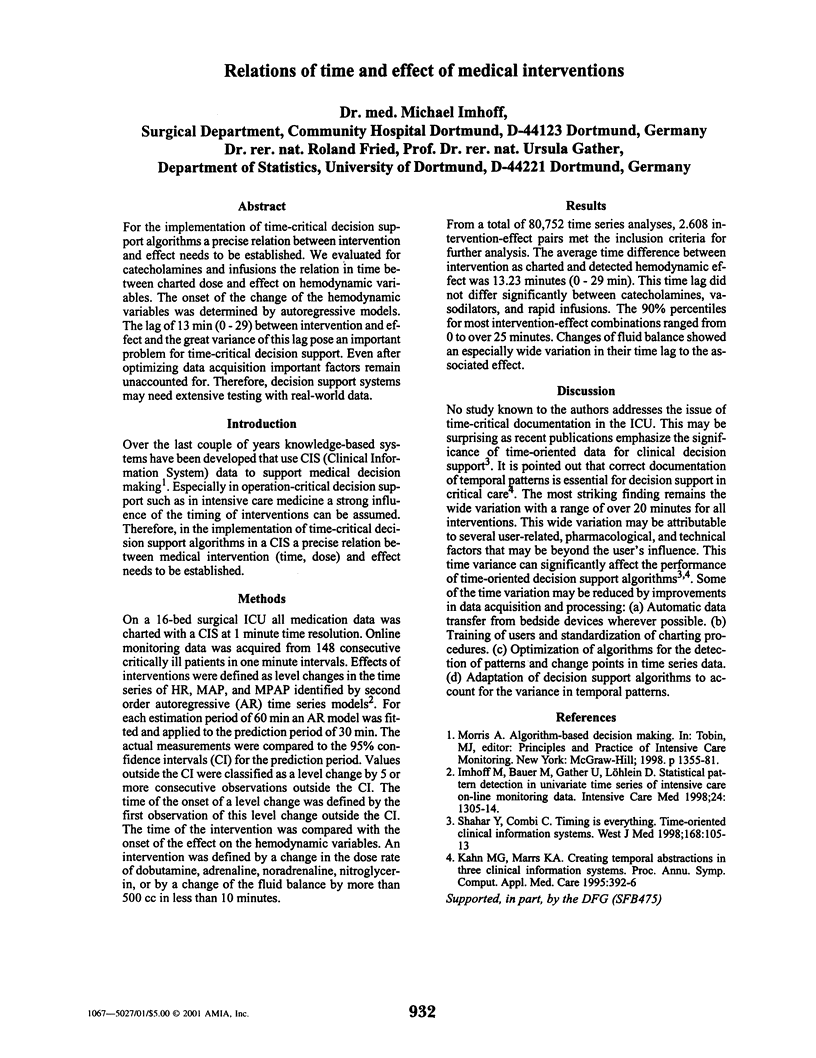Abstract
For the implementation of time-critical decision support algorithms a precise relation between intervention and effect needs to be established. We evaluated for catecholamines and infusions the relation in time between charted dose and effect on hemodynamic variables. The onset of the change of the hemodynamic variables was determined by autoregressive models. The lag of 13 min (0 - 29) between intervention and effect and the great variance of this lag pose an important problem for time-critical decision support. Even after optimizing data acquisition important factors remain unaccounted for. Therefore, decision support systems may need extensive testing with real-world data.
Full text
PDFPage 932

Selected References
These references are in PubMed. This may not be the complete list of references from this article.
- Imhoff M., Bauer M., Gather U., Löhlein D. Statistical pattern detection in univariate time series of intensive care on-line monitoring data. Intensive Care Med. 1998 Dec;24(12):1305–1314. doi: 10.1007/s001340050767. [DOI] [PubMed] [Google Scholar]
- Kahn M. G., Marrs K. A. Creating temporal abstractions in three clinical information systems. Proc Annu Symp Comput Appl Med Care. 1995:392–396. [PMC free article] [PubMed] [Google Scholar]
- Shahar Y., Combi C. Timing is everything. Time-oriented clinical information systems. West J Med. 1998 Feb;168(2):105–113. [PMC free article] [PubMed] [Google Scholar]


